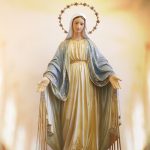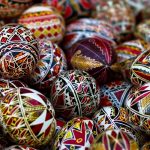
Advent
Marking the beginning of the Christian liturgical year across many different Western churches, and initiating the period of preparation and celebration of the Nativity of Jesus at Christmas, Advent spans between 22 and 28 days.
In the Roman Rite of the Catholic Church, the Anglican Church, the Presbyterian Church, the Methodist Church, and the Western Rite of the Orthodox Church, it begins on the Sunday nearest St. Andrew’s Day (November 30th) and continues over the next three Sundays, ending on the Sunday closest to Christmas Eve or on Christmas Eve itself.
However, in the Mozarabic Rite of the Catholic Church and the Ambrosian Rite of the Catholic Church, the season begins on the sixth Sunday before Christmas or the Sunday following St. Martin’s Day (November 11th).
The History of Advent
While some people claim that the Advent season began with St. Peter, there is little evidence to support that assertion. Most scholars and historians agree that the commemoration of the Nativity of Jesus Christ was established sometime during the fourth century.
During the 5th century, homilies discussed preparation for the liturgical season but did not specify when that season began. It was not until the sixth century that a Synod established that Mondays, Wednesdays, and Fridays from the 11th of November until the Nativity would be observed under the Lenten rite.
It is believed that during this time, the Advent season was formalized. Originally, it was celebrated for five Sundays, but Pope Gregory VII reduced it to four Sundays during his papacy in the 11th century, and it has remained so ever since, although some churches still observe a longer Advent season.
Advent Customs & Traditions
Fasting
Traditionally, Advent was to be a time of fasting, though not everyone adheres to this tradition. Fasting dates back to the 5th century when Bishop Perpetuus of Tours decreed that Christians should fast three days a week from the day after St. Martin’s Day until Christmas.
Many local councils during the 5th and 6th centuries directed their congregations to fast on all days except Saturdays and Sundays from St. Martin’s Day to Epiphany. This period of 40 days of fasting within a 56-day timeframe was known as St. Martin’s Lent.
However, this fasting was later significantly shortened and became known as the Advent season. Eventually, the Lutheran and Anglican churches greatly relaxed this rule, and the Roman Catholic Church abolished fasting as a general rule for Advent.
Nevertheless, many Eastern Orthodox churches still observe 40 days of pre-Christmas fasting, and some other churches not only encourage fasting but also prohibit dancing and festivities during Lent.
The Advent Wreath or Crown
Advent wreaths are commonly found in both homes and churches. This circular evergreen wreath typically holds four candles (and sometimes a fifth) with each candle representing one of the Sundays of Advent.
Families with this wreath will light the candles on each Sunday and recite prayers together. This tradition is believed to have originated with Lutherans in Germany during the 16th century. Sometimes this wreath is referred to as an Advent crown.
The Jesse Tree
Another popular tradition during the Advent season is the Jesse Tree. Named after the father of David, this tree is decorated throughout Advent with symbols representing biblical figures who are historically connected to, or preceded, the birth of Jesus Christ.
This includes individuals such as Abraham, Noah, and Moses, as well as Mary and Joseph. The decoration of this tree serves to remind children of these historical biblical figures and teaches them about the preparatory nature of the Advent season.
The Colors of Advent
Purple is typically the primary color associated with Advent because it has historically signified royalty and also denotes penitence and fasting. However, over the years, many churches have started using colors other than purple for this season. Some now use rose or pink to symbolize the joy of Christ’s birth, while others may use blue to distinguish Advent from Lent.
The First Sunday of Advent
The First Sunday of Advent is particularly significant, with many special activities commencing on this day. Advent calendars, which count down the days to Christmas, may be distributed. These calendars often feature a design that allows for a daily or weekly reveal of a toy, chocolate, or another treat, making the countdown enjoyable for children. On this day, some may also light the first candle on their Advent wreath, symbolizing Hope.
The Second Sunday of Advent
On the Second Sunday of Advent, both the first and second candles are lit, with the second candle representing Peace. It also symbolizes the preparations made to welcome and care for the Christ child. Bible readings on this day focus on Christ and his manger.
The Third Sunday of Advent
The Third Sunday of Advent, also known as Gaudete Sunday, involves lighting the first two candles as well as the third candle on the Advent wreath, which represents Joy. Rose-colored vestments are typically worn, and the Bible passages read pertain to St. John the Baptist.
The Fourth Sunday of Advent
All candles are lit on the fourth Sunday, with the day’s candle symbolizing Love. The readings for this day relate to the annunciation of Christ’s birth. If the Advent wreath includes a fifth candle, known as the Christ Candle, it is lit during the Christmas Eve service.
“`








